Tekton Design ULFBERHT Loudspeaker
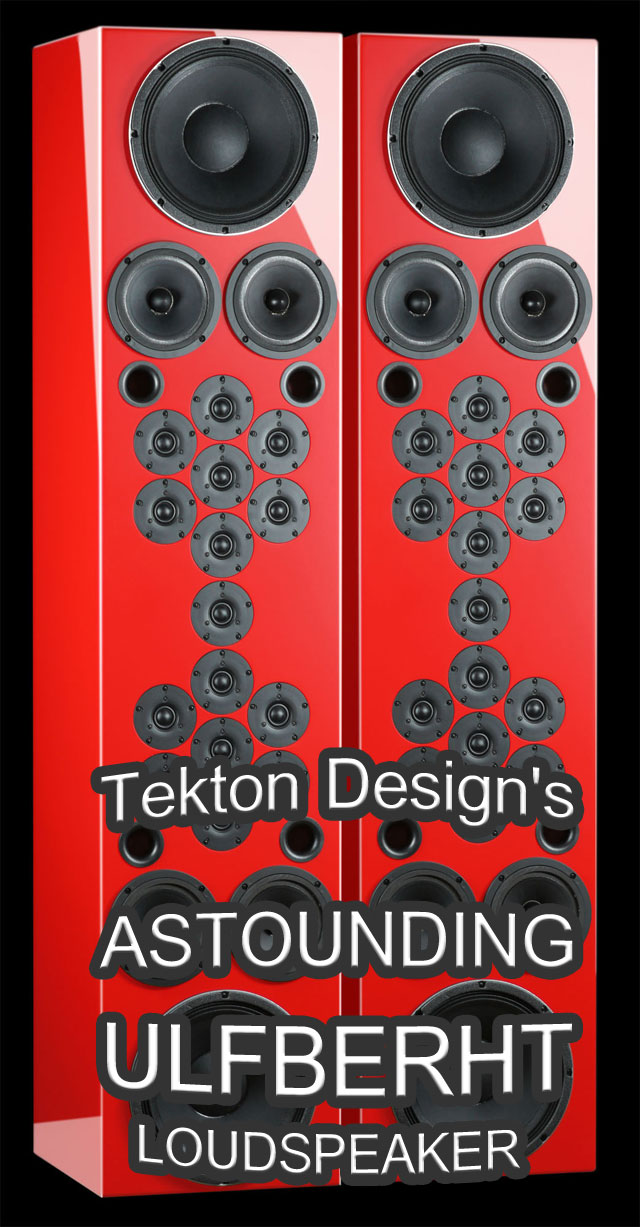
Introduction
 Before I begin this review, I’m sure that a number of readers might be wondering “who is this guy.” Well, I am an audiophile who began my love affair with the high end over 40 years ago. My first “work” as a reviewer was for the New Jersey Audio Society about 30 years ago. Like many of my fellow audiophiles, it has been a never-ending quest over the years to continually improve the performance and enjoyment of my system. Suffice it to say that I cannot even recall how many changes I’ve been through to this point in time, but, there were instances when I had achieved a system which could reasonably be called “state-of-the-art.” One of the high points (certainly in terms of money invested) was a system I put together, beginning in the year 2000, consisting of: the Dynaudio Evidence Master Loudspeakers (one of the first speakers on the planet to approach a six-figure MSRP), Mark Levinson electronics, i.e. the #33 Reference Amplifiers, #32 Reference Preamp and the #31.5 Reference CD player, Transparent Opus Speaker Cables and Reference interconnects, etc. Time moves on, however, and a listing of my current equipment appears at the end of this review. I also moved into another home a few years ago and now have the luxury of a fairly spacious dedicated listening room (16’ x 28’ x 9’).
Before I begin this review, I’m sure that a number of readers might be wondering “who is this guy.” Well, I am an audiophile who began my love affair with the high end over 40 years ago. My first “work” as a reviewer was for the New Jersey Audio Society about 30 years ago. Like many of my fellow audiophiles, it has been a never-ending quest over the years to continually improve the performance and enjoyment of my system. Suffice it to say that I cannot even recall how many changes I’ve been through to this point in time, but, there were instances when I had achieved a system which could reasonably be called “state-of-the-art.” One of the high points (certainly in terms of money invested) was a system I put together, beginning in the year 2000, consisting of: the Dynaudio Evidence Master Loudspeakers (one of the first speakers on the planet to approach a six-figure MSRP), Mark Levinson electronics, i.e. the #33 Reference Amplifiers, #32 Reference Preamp and the #31.5 Reference CD player, Transparent Opus Speaker Cables and Reference interconnects, etc. Time moves on, however, and a listing of my current equipment appears at the end of this review. I also moved into another home a few years ago and now have the luxury of a fairly spacious dedicated listening room (16’ x 28’ x 9’).
Right off the bat, let me say that I am not a very technical guy so, if you are looking for an explanation of how the Tekton Design Ulfberht loudspeaker does what it does, you should visit their website (here) for more information. While I know that the design is patented and incorporates several new technologies, I am interested in results and what I hear from the speaker. The proof is in the listening and that is the focus of my review.
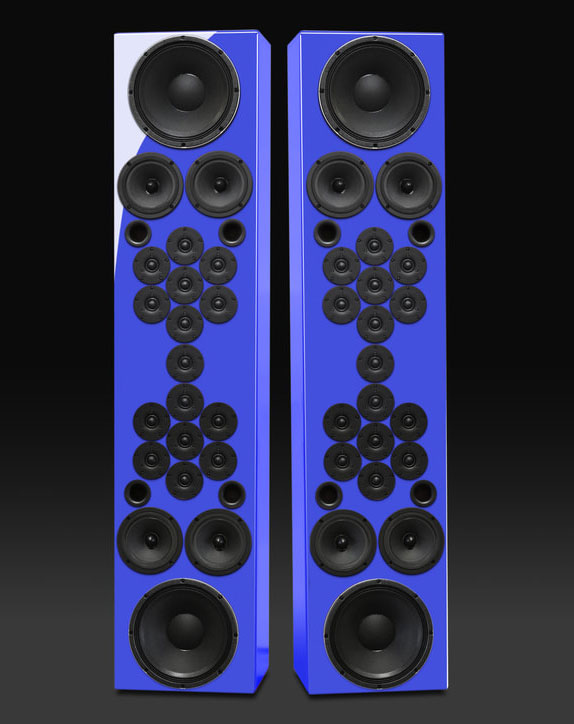
 That said, here are a few quick observations about the speaker itself. First, the Tekton Design Ulfberht loudspeaker is a 4-way design with a rather imposing presence in that it is 17” wide by 16” deep and stands at 73” tall. Each speaker weighs 200 lbs. It is a 4-Ohm design with a power handling capacity of 1,000 watts. When looking at the sight of 21 drivers per side, I couldn’t help wonder if this loudspeaker could possibly be coherent (the short answer is yes, with sound that seems to emerge from one large driver). As to the drivers themselves, each speaker has: 2 low frequency transducers, 4 mid-bass transducers, and (Tekton’s words) a “proprietary, patent-pending 15 dome radiating hybrid MTM high-frequency array.” I chose to have the pair I reviewed delivered without grill cloths, but, for those who want them, they are available.
That said, here are a few quick observations about the speaker itself. First, the Tekton Design Ulfberht loudspeaker is a 4-way design with a rather imposing presence in that it is 17” wide by 16” deep and stands at 73” tall. Each speaker weighs 200 lbs. It is a 4-Ohm design with a power handling capacity of 1,000 watts. When looking at the sight of 21 drivers per side, I couldn’t help wonder if this loudspeaker could possibly be coherent (the short answer is yes, with sound that seems to emerge from one large driver). As to the drivers themselves, each speaker has: 2 low frequency transducers, 4 mid-bass transducers, and (Tekton’s words) a “proprietary, patent-pending 15 dome radiating hybrid MTM high-frequency array.” I chose to have the pair I reviewed delivered without grill cloths, but, for those who want them, they are available.
The Tekton website states: “Ulfberht literally strikes out at the listener with percussive elements and a constant velocity that matches all musical instruments and the human voice. What this means is an entirely new level of realism you’ve never before heard emanate from a loudspeaker.” Do I agree? Well, let’s see.
The Conclusion (?) Part 1
Rather than building suspense which leads to an inevitable conclusion later in this review, I’m going to “let the cat out of the bag” right now and state that, as of this writing in April 2018, and IMHO, the Tekton Design Ulfberht loudspeakers represent the greatest bang-for-the–buck in the world of high-end audio—period! Assuming that: (1) you have a sufficiently large listening room, and (2) the speakers are fed a high-quality signal from the proper electronics, they offer a performance that rivals – if not surpasses – speakers whose prices require the use of six figures. This may cause some consternation for those audiophiles who aren’t happy with their system unless it meets a certain (high) expense level that supports their bragging rights. But, for those to whom performance is the only thing that matters, this may be their ticket to a system that offers sound which, until now, may have been affordable to only those at the “top 1%” of the economic food chain.
Some may think that I must be exaggerating the quality of sound that these loudspeakers can achieve. I assure you – I am not. Of course, the old adage “garbage in – garbage out” still applies and the better your sources, AC power conditioning, assorted tweaks, etc., the more you will appreciate this loudspeaker’s excellence. That said, it would not surprise me that more modestly priced gear will still perform well with the Ulfberhts due, in part, to this loudspeaker’s incredibly high efficiency rating of 99 dB.
How They Sound
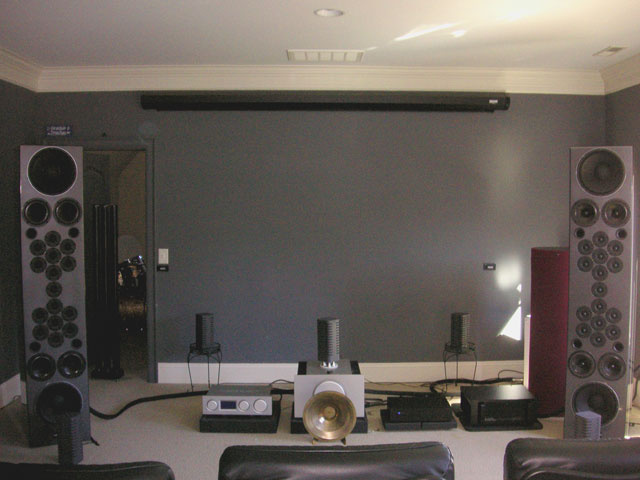
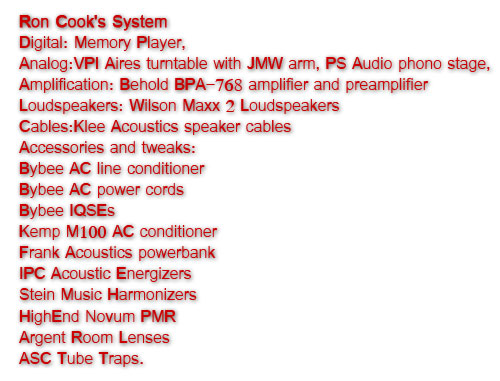 As of this writing, I began my listening experience with the Tekton Design Ulfberht loudspeakers a little over one month ago. In all honesty, listening to them right “out-of-the-box” was an experience best described as “eh” since the sound seemed a bit thin, opaque and somewhat bright, all at the same time. Since I am an “early-adaptor” of the Ulfberhts, I made a quick call to Eric Alexander – the designer and manufacturer of the speaker – and he informed me that, indeed, these speakers would require a considerable amount of break-in before coming into their own (he was absolutely correct). I then set up my system for continuous play and let the speaker have some time for break-in before attempting any serious listening. During that first week, I could already discern a noticeably improved sound, but, my comments that follow are based on what I am listening to now, after one month of break-in (as an aside, they will supposedly continue to improve even further in the next month or two – if that holds true, OMG lookout!!).
As of this writing, I began my listening experience with the Tekton Design Ulfberht loudspeakers a little over one month ago. In all honesty, listening to them right “out-of-the-box” was an experience best described as “eh” since the sound seemed a bit thin, opaque and somewhat bright, all at the same time. Since I am an “early-adaptor” of the Ulfberhts, I made a quick call to Eric Alexander – the designer and manufacturer of the speaker – and he informed me that, indeed, these speakers would require a considerable amount of break-in before coming into their own (he was absolutely correct). I then set up my system for continuous play and let the speaker have some time for break-in before attempting any serious listening. During that first week, I could already discern a noticeably improved sound, but, my comments that follow are based on what I am listening to now, after one month of break-in (as an aside, they will supposedly continue to improve even further in the next month or two – if that holds true, OMG lookout!!).
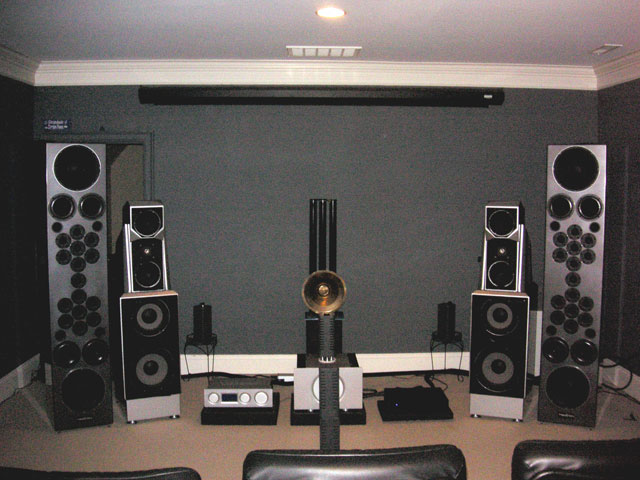
 It is always challenging to describe how a component “sounds” but, here are some thoughts. The Tekton Design Ulfberht loudspeakers seems to combine the best elements of various designs or types, e.g. the transparency and delicacy of electrostats, the dynamics and transient speed of horns, and, the silky-smoothness of the best cones. They also produce the lowest of the low bass with power, control, and room-rattling notes that you can feel as well as hear. All this, while producing an enormous soundstage within which the speaker does the disappearing act of a mini-monitor. Image sizes are appropriate to the recording and/or sound sources (voices, instruments, etc.) and the speaker is capable of producing the full grandeur of a symphony orchestra on a scale that rivals the larger (and MUCH more expensive) speaker designs available today.
It is always challenging to describe how a component “sounds” but, here are some thoughts. The Tekton Design Ulfberht loudspeakers seems to combine the best elements of various designs or types, e.g. the transparency and delicacy of electrostats, the dynamics and transient speed of horns, and, the silky-smoothness of the best cones. They also produce the lowest of the low bass with power, control, and room-rattling notes that you can feel as well as hear. All this, while producing an enormous soundstage within which the speaker does the disappearing act of a mini-monitor. Image sizes are appropriate to the recording and/or sound sources (voices, instruments, etc.) and the speaker is capable of producing the full grandeur of a symphony orchestra on a scale that rivals the larger (and MUCH more expensive) speaker designs available today.
Listening
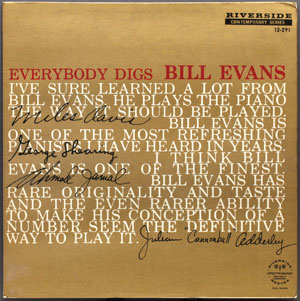 As a professional drummer, I am particularly sensitive to, and appreciative of, the way the best systems present the sound of a drum kit. With that in mind, I can honestly say that I have not yet heard a better reproduction of a “real” drum sound than that produced by the Ulfberhts. The attack of snare-drum rim shots, the rich, round sound of toms and the bass drum and the delicacy and shimmer of cymbals are all captured with a you are there focus that is mesmerizing. For example, on the JVC CD “Everybody Digs Bill Evans” [JVCXR-0020-2], the fourth track, Night and Day, begins with a brief solo by Philly-Joe Jones. In this recording, his kit “appears” well to the left side of the soundstage and about 3 to 4 feet behind the speaker (again, that magical soundstaging). The sound of his opening rimshots (with the snares thrown off his snare drum) are absolutely startling in their realism! I have had guest listeners almost jump from their seat when this track begins and they are amazed by how the drums sound “live” and “in the room” with the attack, speed and clarity of the real thing. The sound of his K-Zildjian ride cymbal is also as close to “real” as I’ve yet heard. Combined with Bill Evans’ masterful playing, this is a remarkable listening experience.
As a professional drummer, I am particularly sensitive to, and appreciative of, the way the best systems present the sound of a drum kit. With that in mind, I can honestly say that I have not yet heard a better reproduction of a “real” drum sound than that produced by the Ulfberhts. The attack of snare-drum rim shots, the rich, round sound of toms and the bass drum and the delicacy and shimmer of cymbals are all captured with a you are there focus that is mesmerizing. For example, on the JVC CD “Everybody Digs Bill Evans” [JVCXR-0020-2], the fourth track, Night and Day, begins with a brief solo by Philly-Joe Jones. In this recording, his kit “appears” well to the left side of the soundstage and about 3 to 4 feet behind the speaker (again, that magical soundstaging). The sound of his opening rimshots (with the snares thrown off his snare drum) are absolutely startling in their realism! I have had guest listeners almost jump from their seat when this track begins and they are amazed by how the drums sound “live” and “in the room” with the attack, speed and clarity of the real thing. The sound of his K-Zildjian ride cymbal is also as close to “real” as I’ve yet heard. Combined with Bill Evans’ masterful playing, this is a remarkable listening experience.
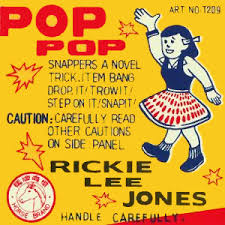 As impressive as this is, the portrayal of the human voice may, perhaps, be even more so. Put simply, the Ulfberhts present voices with the highest levels of transparency while, at the same time, offering a delicacy and velvet-like smoothness that can only be described as beautiful. Take, for example, track 12 from the Rickie Lee Jones CD “Pop-Pop” [GEFD-24426] entitled Come Back To Me. Her performance here ranges from a near whisper at the beginning of the song to a near-explosive cry at the end and the speaker captures every nuance in her voice as she navigates the heartfelt emotion on this track. Again, mesmerizing.
As impressive as this is, the portrayal of the human voice may, perhaps, be even more so. Put simply, the Ulfberhts present voices with the highest levels of transparency while, at the same time, offering a delicacy and velvet-like smoothness that can only be described as beautiful. Take, for example, track 12 from the Rickie Lee Jones CD “Pop-Pop” [GEFD-24426] entitled Come Back To Me. Her performance here ranges from a near whisper at the beginning of the song to a near-explosive cry at the end and the speaker captures every nuance in her voice as she navigates the heartfelt emotion on this track. Again, mesmerizing.
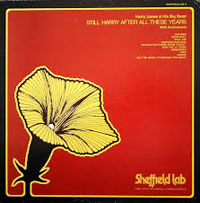 I have already mentioned the excellent soundstaging of the Ulfberhts, but, let me give an example that really shows it off. In the Harry James LP “Still Harry After All These Years” [Sheffield Lab 11] also on CD [Sheffield Lab, CD-11], the track Roll ‘Em features the entire big-band and the speaker allows one to clearly discern the individual instruments with no smearing – just as in real life. Moreover, in one part of the song (after a brief piano solo) the 5 saxophones, then the three trombones, and then the four trumpets play a few notes each. As they do so, I clearly heard something I never noticed before, (and I’ve heard this track many, many times) namely, the positioning of each section of the band. The saxes are clearly front-right/center, the trombones behind and above the saxes and the trumpets were above and behind the trombones! This captures precisely the way the band would normally be set up when performing, and, to hear this so effortlessly was quite amazing and very entertaining. In addition, the tonal colors of the horns -as well as all the other instruments – are lifelike and gorgeous with the perfect amount of “bite” to the brass.
I have already mentioned the excellent soundstaging of the Ulfberhts, but, let me give an example that really shows it off. In the Harry James LP “Still Harry After All These Years” [Sheffield Lab 11] also on CD [Sheffield Lab, CD-11], the track Roll ‘Em features the entire big-band and the speaker allows one to clearly discern the individual instruments with no smearing – just as in real life. Moreover, in one part of the song (after a brief piano solo) the 5 saxophones, then the three trombones, and then the four trumpets play a few notes each. As they do so, I clearly heard something I never noticed before, (and I’ve heard this track many, many times) namely, the positioning of each section of the band. The saxes are clearly front-right/center, the trombones behind and above the saxes and the trumpets were above and behind the trombones! This captures precisely the way the band would normally be set up when performing, and, to hear this so effortlessly was quite amazing and very entertaining. In addition, the tonal colors of the horns -as well as all the other instruments – are lifelike and gorgeous with the perfect amount of “bite” to the brass.
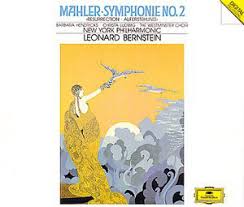 The Tekton Design Ulfberhts will also amaze with their ability to present the impact, scale and sheer musical thunder of a full symphony orchestra. Take, for example, one of my favorite works – the Mahler 2nd (Resurrection) Symphony. I especially like the Bernstein version – where he conducts the New York Philharmonic – on the Deutsche Grammophon double CD [423 395-2]. This work is about as “big” as sound gets and I was fortunate to see a live performance of this symphony not long ago. Now, I’m not going to tell you that this speaker (or any speaker, for that matter) creates the same sound as a live symphony orchestra. I will tell you, however, that the Ulfberhts overall presentation is damn close in terms of the ability to portray the scale of the work without any sense of strain. Combined with the tonal colors of the strings, brass, reeds and rest of the orchestra, the emotional impact of the performance IS there for you to hear, feel and enjoy.
The Tekton Design Ulfberhts will also amaze with their ability to present the impact, scale and sheer musical thunder of a full symphony orchestra. Take, for example, one of my favorite works – the Mahler 2nd (Resurrection) Symphony. I especially like the Bernstein version – where he conducts the New York Philharmonic – on the Deutsche Grammophon double CD [423 395-2]. This work is about as “big” as sound gets and I was fortunate to see a live performance of this symphony not long ago. Now, I’m not going to tell you that this speaker (or any speaker, for that matter) creates the same sound as a live symphony orchestra. I will tell you, however, that the Ulfberhts overall presentation is damn close in terms of the ability to portray the scale of the work without any sense of strain. Combined with the tonal colors of the strings, brass, reeds and rest of the orchestra, the emotional impact of the performance IS there for you to hear, feel and enjoy.
Conclusion – Part 2
The Tekton Design Ulfberht loudspeakers have shocked me – in a most pleasant way. There is no way that one would expect a loudspeaker, at the relatively modest price of $12,000, to sound the way the Ulfberhts do. It is simply unheard of (pun intended). Now, the “buzz” was that Tekton had been creating a number of designs that perform well beyond what their prices would indicate. This was all the more credible to me since I personally know several people who have purchased the Tekton Double Impact to replace far more costly speakers. That said, I was and am amazed at the sound and enjoyment the Ulfberht speakers have provided in my home. Of course, I will be keeping them.
One more thing about the value of these, and other, Tekton speakers. I have noticed that there are those who have said that some of the Tekton speakers can rival loudspeakers that list for as much as 10 times the cost of a comparable Tekton design. I no longer doubt this. In the instant case, that would mean that the Ulfberhts might rival loudspeakers in the $120,000 and up price range. I also no longer doubt this in the slightest. Of course, sound quality at this level of performance is a highly personalized matter of taste. Suffice it to say that, for me, the Ulfberhts push all the right buttons in my system and the resulting performance is about as good as it gets. Are they the “perfect” speaker for you? Well, only you can decide that, but, if you are shopping for a loudspeaker that delivers the performance of the Ulfberhts and you don’t buy them – be prepared to shop in the six-figure price range. They are THAT good!

Ron cook
Specifications: Price: $12,000 USA
Made under U.S. Patent 9247339 with multiple new patents pending
Proprietary 4-way loudspeaker design
Ultra-linear frequency response with ±.5dB deviation from 70Hz-20kHz
One single crossover element placed within the tweeter path
Ultra-linear, entirely time-invariant minimum-phase mid-range section
Proprietary patent pending 15 dome radiating hybrid MTM high frequency array – of Danish origin
Four 7″ mid-bass patented ‘overtone & harmonic’ bass transducers – of Italian origin
Dual 12″ low-frequency transducers – of American pro audio origin
99dB 2.83V@1m sensitivity
4 Ohm design for optimum performance
20Hz-30kHz frequency response
1000 Watt power handling
Weight 200 lbs
Height 77.0″x Width 16.0″ x Depth 17.0″
Manufactured in the USA
Website: www.tektondesign.com
Stereo Times Masthead
Publisher/Founder
Clement Perry
Editor
Dave Thomas
Senior Editors
Frank Alles, Mike Girardi, Key Kim, Russell Lichter, Terry London, Moreno Mitchell, Paul Szabady, Bill Wells, Mike Wright, Stephen Yan, and Rob Dockery
Current Contributors
David Abramson, Tim Barrall, Dave Allison, Ron Cook, Lewis Dardick, Dan Secula, Don Shaulis, Greg Simmons, Eric Teh, Greg Voth, Richard Willie, Ed Van Winkle, and Rob Dockery
Music Reviewers:
Carlos Sanchez, John Jonczyk, John Sprung and Russell Lichter
Site Management Clement Perry
Ad Designer: Martin Perry





Be the first to comment on: Tekton Design ULFBERHT Loudspeaker